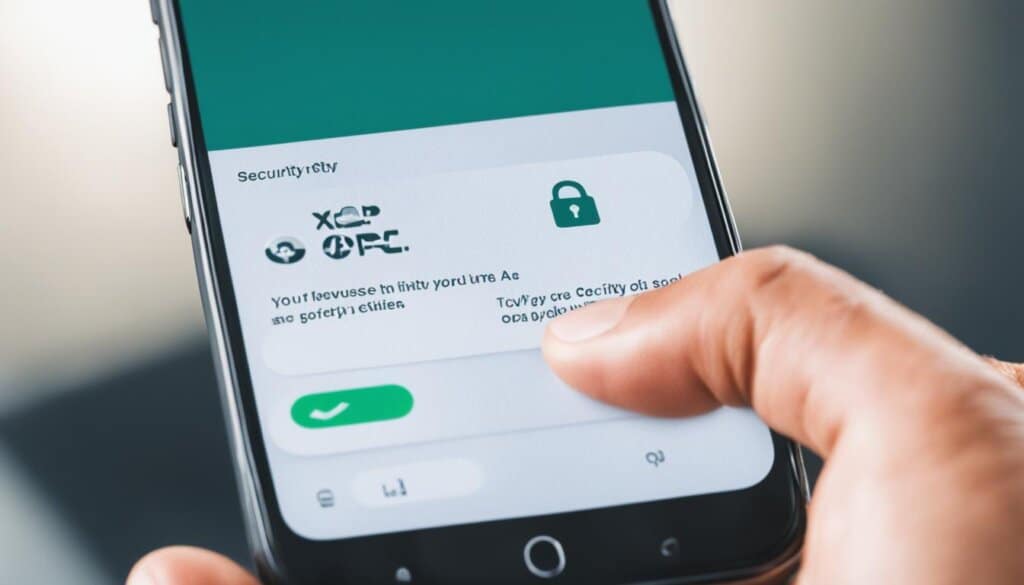Table of Contents
In today’s digital world, where online security threats are a constant concern, organizations and individuals alike are seeking robust authentication methods to protect their sensitive information. One such method is the use of OTP codes.
OTP, or One-Time Password, is an additional layer of security that enhances the traditional username and password authentication process. It involves sending a unique, time-sensitive code to a second factor or device for verification, ensuring that only authorized individuals gain access to their accounts or resources.
OTP codes can be delivered through various methods, including SMS, voice messages, email verification, push notifications, and third-party authenticator apps. These one-time codes are generated using algorithms and time-sensitive variables, making them highly secure.
The use of OTP authentication is prevalent across different industries, including healthcare, e-commerce, government, finance, and information technology. Its application in these sectors helps safeguard sensitive data, comply with regulatory requirements, and prevent unauthorized access to valuable resources.
Now that we have a general understanding of OTP codes, let’s delve deeper into how they work and the common delivery methods used.
How Does OTP Authentication Work?
OTP authentication is a crucial method for verifying a user’s identity and ensuring secure access to online accounts and resources. Let’s explore how OTP authentication functions and the steps involved in this process.
Generating a One-Time Code
OTP authentication begins by generating a unique one-time code. This code serves as an additional layer of security, supplementing traditional username and password authentication methods. The one-time code is designed to be used only once, enhancing the security of the authentication process.
Delivery Methods
The generated OTP code is then delivered to the user through various methods, including:
- SMS: The code is sent as a text message to the user’s mobile device.
- Voice Messages: The code is delivered through an automated voice message over a phone call.
- Email: The code is sent directly to the user’s email inbox.
- Push Notifications: The code is received as a notification on the user’s device.
- Authenticator Apps: The code is generated within a dedicated app, such as Google Authenticator or Microsoft Authenticator.
These delivery methods ensure that the user can receive the OTP code conveniently, regardless of the device they are using.
Verification Process
Once the user receives the OTP code, they enter it into the authentication window or form. The entered code is then verified with the authentication server. This verification step ensures that the code is valid and matches the one generated for that specific authentication session.
Granting Access
If the entered code matches the one generated by the authentication server, the user is granted access to their account or the requested resources. OTP authentication serves as a secure mechanism for validating the user’s identity, adding an extra layer of protection against unauthorized access.
It’s important to note that OTP codes can be created each time a user requests access or have a specific timeframe for use before they expire and become invalid. This time-sensitive nature further enhances the security provided by OTP authentication.
Common Delivery Methods for OTPs
One-time passwords (OTPs) can be delivered through various methods to enhance authentication and secure user accounts. Here are some common delivery methods for OTPs:
- SMS OTP: This method involves sending a time-sensitive code to a user’s mobile device via text message. Users receive the OTP code directly on their phones, making it convenient and easily accessible.
- Voice OTP: With voice OTP, the code is delivered through an automated voice message over a phone call. This method is particularly useful for users who may have limited access to text messaging or prefer auditory instructions.
- Email OTP: OTPs can be sent directly to a user’s inbox via email. Users can retrieve the code conveniently through their email application, making it accessible across different devices.
- Messaging Apps: Popular messaging apps like Telegram, WhatsApp, and Viber can also be used to send OTPs. Users receive the code within the messaging app, enhancing the security and convenience of the authentication process.
- Hardware Keys: Hardware keys generate one-time codes offline and provide an additional layer of security. These keys, such as Yubikeys, are highly secure as they are not vulnerable to online attacks and are inaccessible to fraudsters.
- Authenticator Apps: Authenticator apps like Google Authenticator and Microsoft Authenticator generate OTPs within the user’s device. These apps use algorithms to generate time-sensitive codes that can only be accessed on the user’s trusted device, enhancing security significantly.
Each delivery method has its advantages and considerations, and organizations can choose the most suitable method based on their security requirements and users’ preferences.

| Delivery Method | Advantages | Considerations |
|---|---|---|
| SMS OTP | Convenient and widely accessible Instant delivery to mobile devices |
Dependent on mobile network coverage Potential cost for users receiving international SMS |
| Voice OTP | Accessible for users with limited text messaging capabilities Can be used in noisy environments |
Potential issues with voice recognition Requires the availability of phone networks |
| Email OTP | Accessible across devices and platforms Users are familiar with email-based communications |
Potential delays in email delivery Prone to phishing attacks if email accounts are compromised |
| Messaging Apps | Convenient for users already using messaging apps Enhanced security through end-to-end encryption |
Dependency on internet connectivity Users must have the messaging app installed and active |
| Hardware Keys | Offline code generation for enhanced security Protection against online attacks |
Requires users to carry an additional physical device Inconvenient for users who frequently switch devices |
| Authenticator Apps | Offline code generation within trusted devices Protection against online attacks |
Users must download and configure the app Cannot be used on devices without the authenticator app installed |
Industries that Use OTPs for MFA
One-time passwords (OTPs) are widely employed in industries that prioritize privacy and security. In the healthcare sector, OTPs play a crucial role in employee identity access management (IAM) and compliance with regulations like HIPAA. These passwords provide an extra layer of authentication, ensuring that only authorized personnel can access sensitive patient information and medical records.
In the e-commerce industry, OTP authentication is employed to safeguard user accounts and protect valuable financial data. By implementing OTPs, companies can prevent unauthorized access and reduce the risk of data breaches, bolstering customer trust and confidence in their platforms.
Government agencies heavily rely on OTPs to secure online portals and control access to vital databases. By implementing OTP authentication, these agencies can effectively verify the identities of individuals attempting to access sensitive information or perform critical operations, such as filing tax returns or accessing confidential records.
The finance and banking sector also benefits from OTPs as an essential tool to combat financial fraud and secure user accounts. OTP authentication adds an extra layer of protection, ensuring that only authorized individuals can carry out transactions and access sensitive financial information, safeguarding against unauthorized access and potential fraudulent activities.
In the information technology sector, industry giants like Google and Microsoft utilize OTP authentication as a core cybersecurity practice. By implementing OTPs, these companies strengthen the security of user accounts and protect sensitive information from hackers and unauthorized access.
FAQ
What is an OTP code?
An OTP code, or one-time password, is a unique code that is generated and sent to a user’s device as an additional factor for authentication.
How does OTP authentication work?
OTP authentication works by generating a one-time code and sending it to the user through methods like SMS, voice messages, email, push notifications, or authenticator apps. The user enters the code into the authentication window or form, and if it matches, they are granted access.
What are the common delivery methods for OTPs?
Common delivery methods for OTPs include SMS, voice messages, email, messaging apps like Telegram and WhatsApp, hardware keys, and authenticator apps like Google Authenticator.
Which industries use OTPs for MFA?
OTPs are widely used in industries such as healthcare, e-commerce, government, finance, and information technology to enhance security and protect user accounts and sensitive information.













